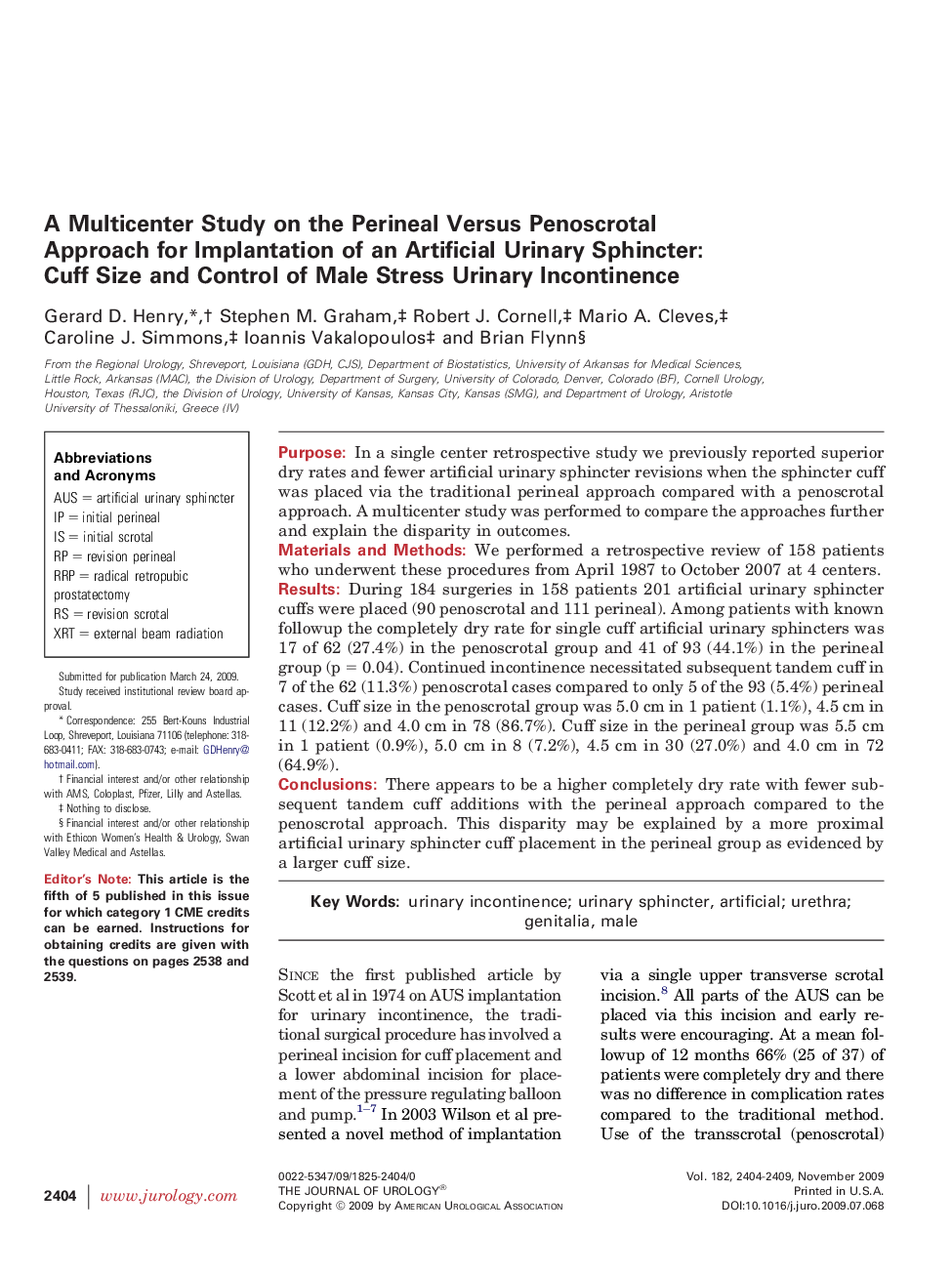| Article ID | Journal | Published Year | Pages | File Type |
|---|---|---|---|---|
| 3868349 | The Journal of Urology | 2009 | 6 Pages |
PurposeIn a single center retrospective study we previously reported superior dry rates and fewer artificial urinary sphincter revisions when the sphincter cuff was placed via the traditional perineal approach compared with a penoscrotal approach. A multicenter study was performed to compare the approaches further and explain the disparity in outcomes.Materials and MethodsWe performed a retrospective review of 158 patients who underwent these procedures from April 1987 to October 2007 at 4 centers.ResultsDuring 184 surgeries in 158 patients 201 artificial urinary sphincter cuffs were placed (90 penoscrotal and 111 perineal). Among patients with known followup the completely dry rate for single cuff artificial urinary sphincters was 17 of 62 (27.4%) in the penoscrotal group and 41 of 93 (44.1%) in the perineal group (p = 0.04). Continued incontinence necessitated subsequent tandem cuff in 7 of the 62 (11.3%) penoscrotal cases compared to only 5 of the 93 (5.4%) perineal cases. Cuff size in the penoscrotal group was 5.0 cm in 1 patient (1.1%), 4.5 cm in 11 (12.2%) and 4.0 cm in 78 (86.7%). Cuff size in the perineal group was 5.5 cm in 1 patient (0.9%), 5.0 cm in 8 (7.2%), 4.5 cm in 30 (27.0%) and 4.0 cm in 72 (64.9%).ConclusionsThere appears to be a higher completely dry rate with fewer subsequent tandem cuff additions with the perineal approach compared to the penoscrotal approach. This disparity may be explained by a more proximal artificial urinary sphincter cuff placement in the perineal group as evidenced by a larger cuff size.
